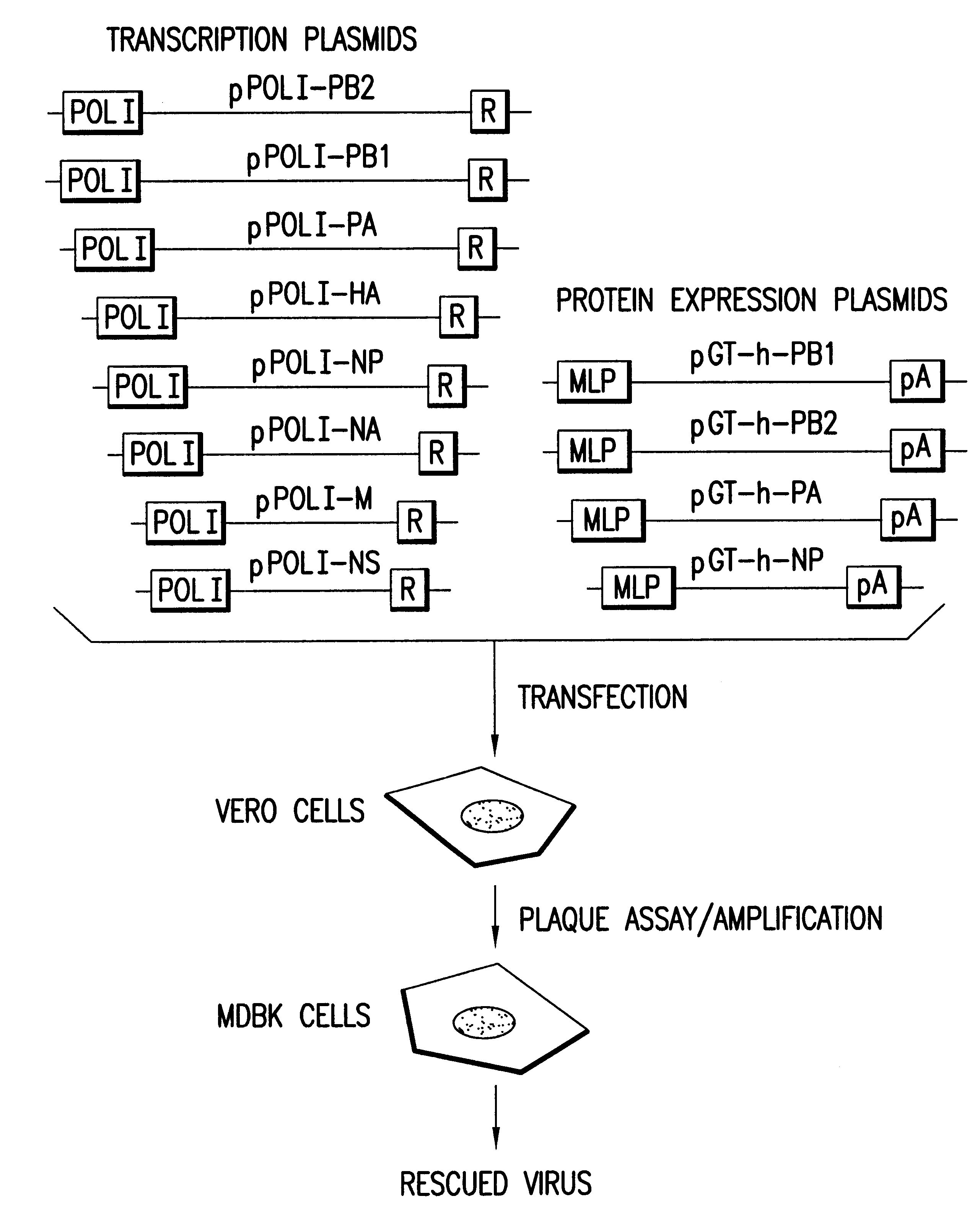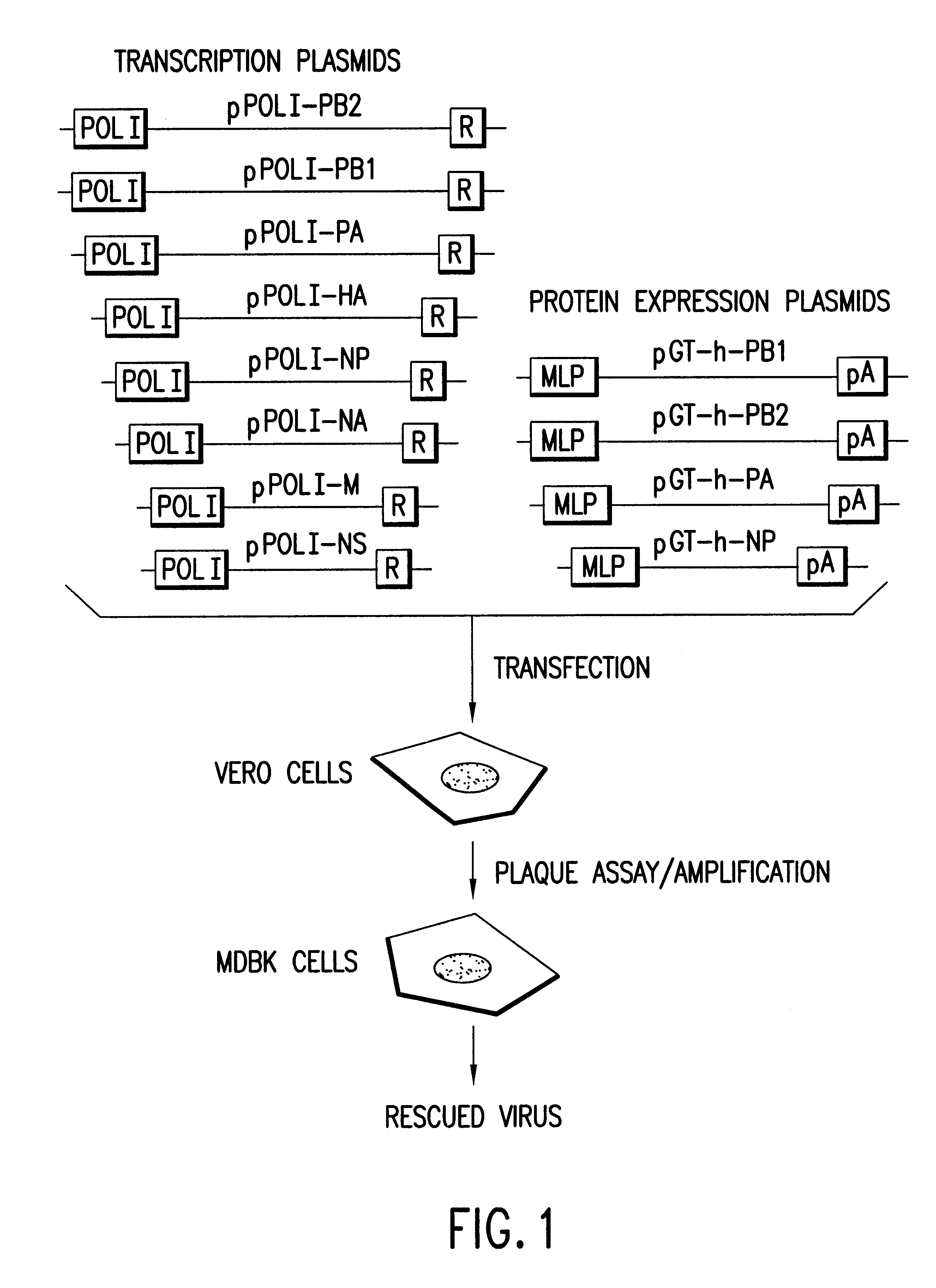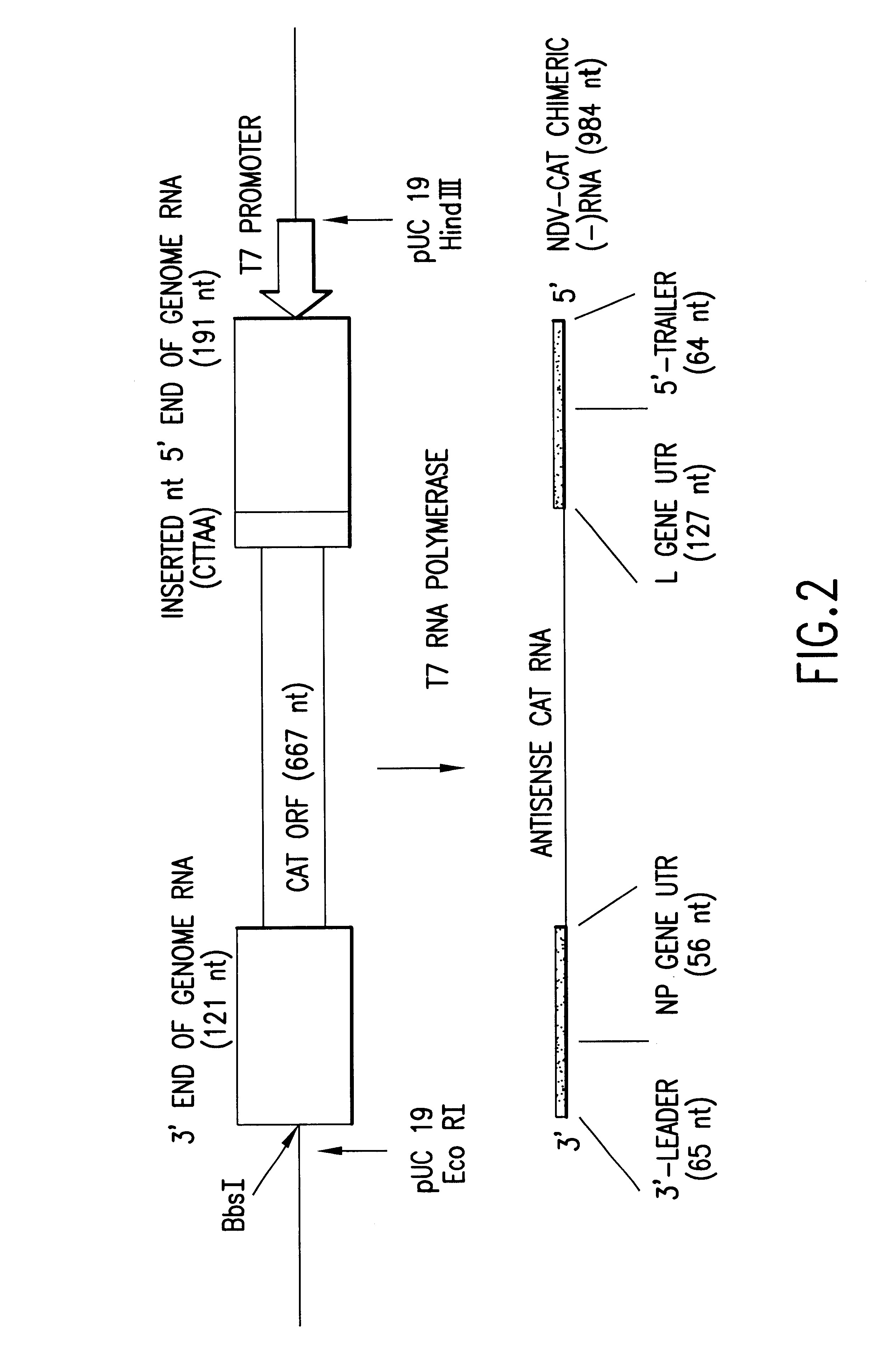Helper-free rescue of recombinant negative strand RNA viruses
a technology of recombinant negative strands and viruses, which is applied in the field of generating infectious recombinant negative strand rna viruses, can solve the problems of strict limitations on repeated use, lack of variation in its major epitopes, and failure to analyze signals
- Summary
- Abstract
- Description
- Claims
- Application Information
AI Technical Summary
Benefits of technology
Problems solved by technology
Method used
Image
Examples
Embodiment Construction
The present invention provides methods of generating infectious negative-strand RNA viruses intracellularly from recombinant nucleic acid molecules. In particular, the present invention provides methods of generating an infectious negative-strand RNA virus in 293T cells, said methods comprising providing expression vectors capable of expressing genomic or antigenomic viral RNA segments,and nucleoproteins, and RNA dependent RNA polymerase, whereby RNPs are formed in said cells and infectious recombinant negative-strand RNA is produced in the absence of helper virus. The present invention encompasses methods of infectious recombinant negative-strand RNA virus having a segmented or nonsegmented genome.
The present invention provides methods of generating infectious, replicating recombinant negative-strand RNA virus in the absence of helper virus by transiently transfecting 293T cells with expression vectors providing the genomic vRNA(s) or the corresponding cRNA(s) and the required vira...
PUM
| Property | Measurement | Unit |
|---|---|---|
| concentration | aaaaa | aaaaa |
| pore size | aaaaa | aaaaa |
| body weight | aaaaa | aaaaa |
Abstract
Description
Claims
Application Information
 Login to View More
Login to View More - R&D
- Intellectual Property
- Life Sciences
- Materials
- Tech Scout
- Unparalleled Data Quality
- Higher Quality Content
- 60% Fewer Hallucinations
Browse by: Latest US Patents, China's latest patents, Technical Efficacy Thesaurus, Application Domain, Technology Topic, Popular Technical Reports.
© 2025 PatSnap. All rights reserved.Legal|Privacy policy|Modern Slavery Act Transparency Statement|Sitemap|About US| Contact US: help@patsnap.com



